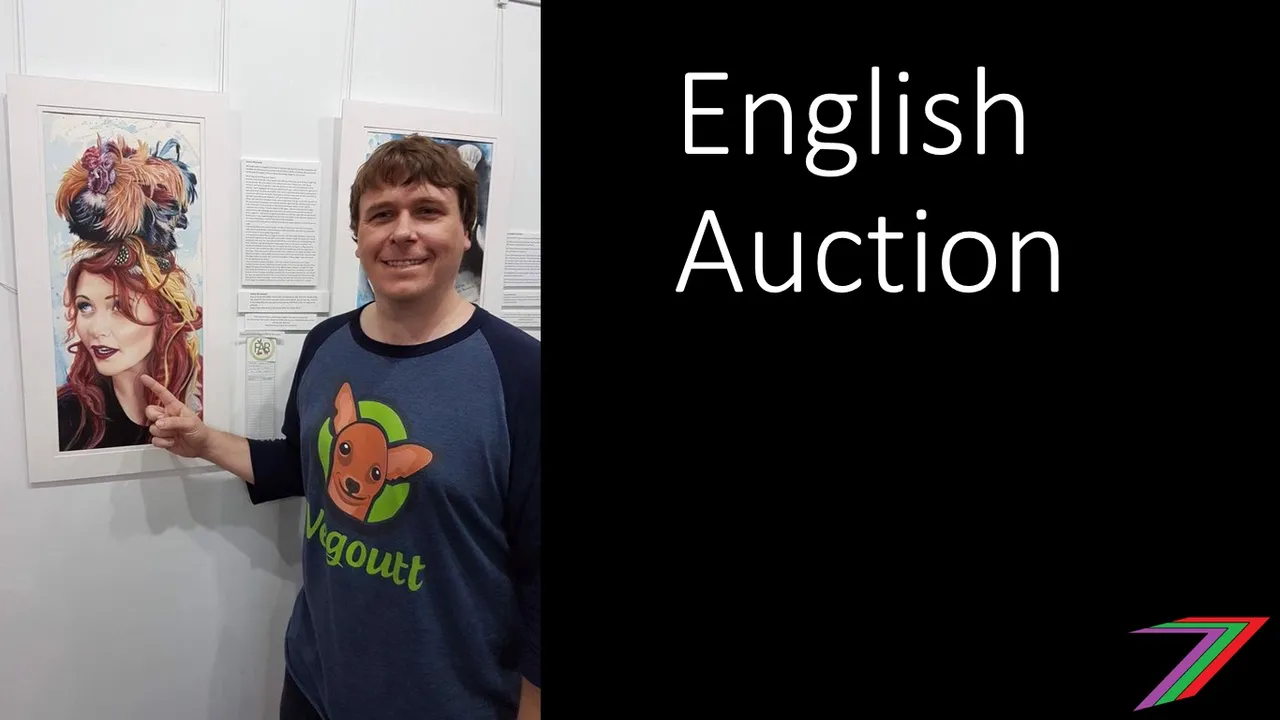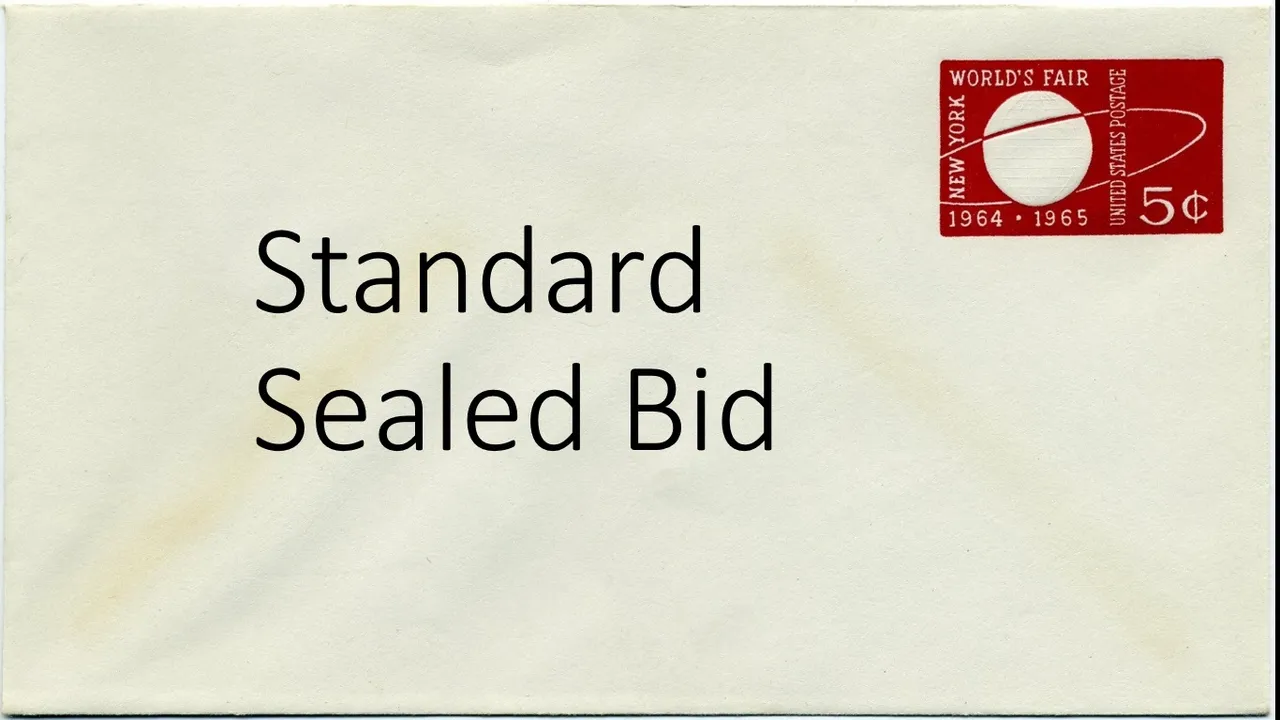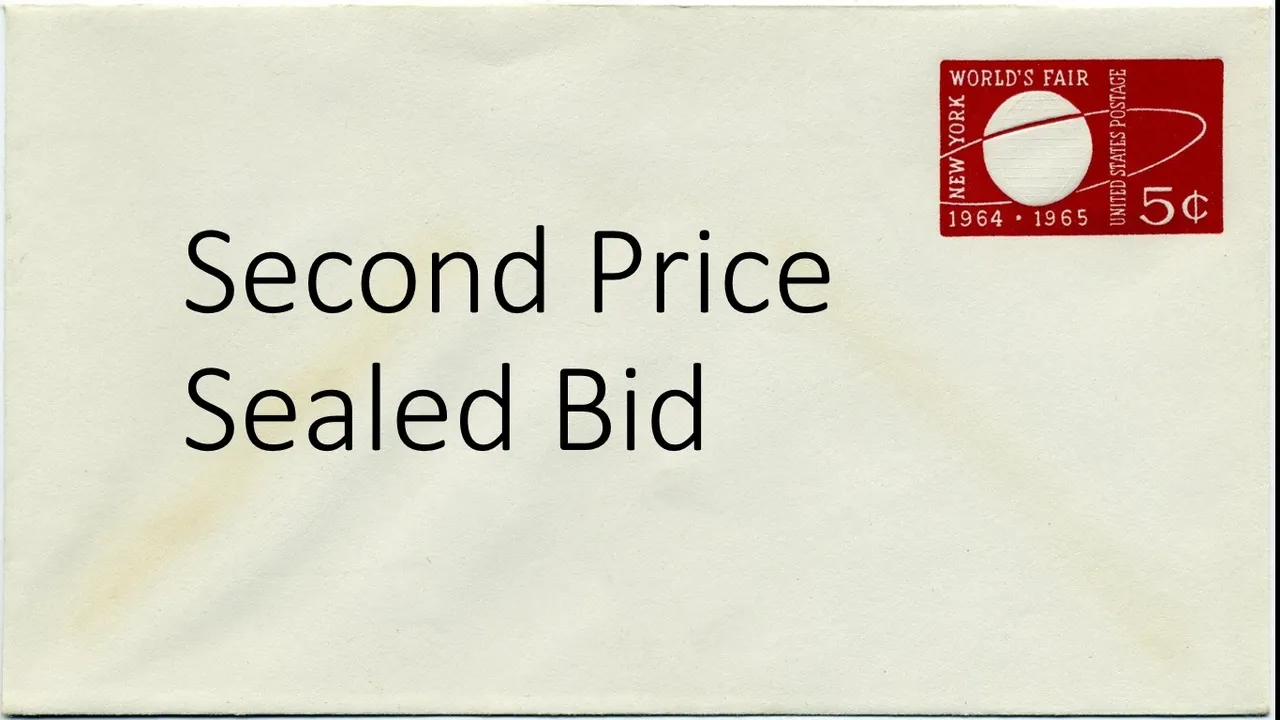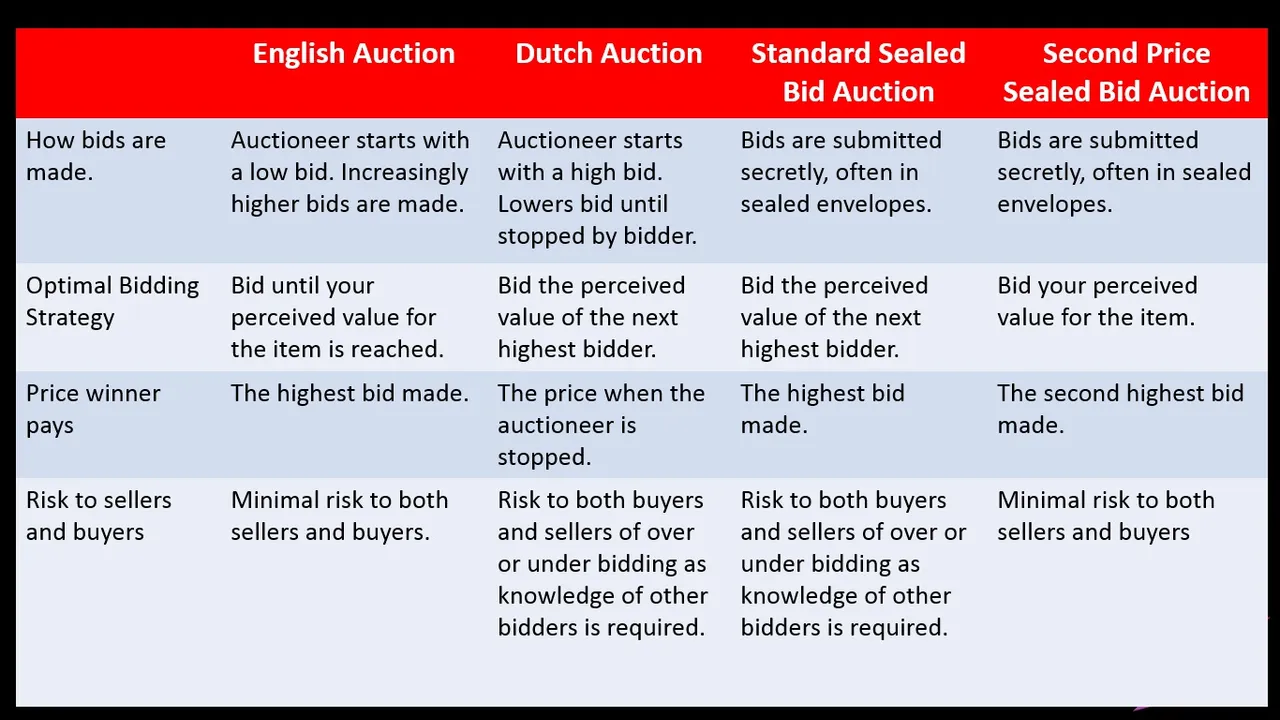Hi Steemians,
How many of you have attended an auction? Auctions can be quite exciting events. When we think of auctions we typically think of a room full of people bidding for particular items. The person who bids the highest wins the item that is being auctioned. This is only one type of auction and this is known as an English auction. There are also several other types of auctions.

In this post I would like to explain four types of auctions. These auctions are as followers:
- English auction
- Dutch auction
- Standard sealed bid auction
- Second price sealed bid auction
Both the English auction and Dutch auctions are open bid auctions. That means that people know what bids have been made by others. For sealed auctions, people are not informed of other people’s bids during the auction.
English auction
Most people are familiar with English auctions. An item is placed on auction. There is a starting bid. The first bid must be above the starting value. The second bid must be above the first bid and so on. Once the bidding stops, nobody what’s to bid higher than the bid currently in, the auction ends. The person with the last, also the highest bid wins.
A person keeps bidding until the value of the last bid exceeds the value they place on the item. If a person values an item at $100 and if the bid is currently $80. The person will continuing bidding. Of the bid is currently $110, the person will no longer bid. The person who wins the auction values the item more than the last bid. The winner of the auction pays the price that the second person values the item or just marginally above.

Dutch auction
A Dutch auction works in the opposite direction to an English auction. Instead of starting with a low value and people bid upwards. The Dutch auction starts with a high value and the value stops until someone makes a bid. With a Dutch auction, the person waits until the price drops below, their valuation of the item. The question is how far below the valuation should the person wait. The person does not know the value others place on the item. If a person waits too long. Another person will bid and get the item. If the person bids too soon they will pay more than they needed to.

Standard sealed bid auction
A standard sealed bid auction typically involves people making bids simulataneously and then placing the bids in sealed envelopes. A standard sealed bid auction means that the person with the highest bid wins and pays the value of the bid that they placed. In a standard sealed bid auction, people will place bids lower than their own valuation of the item up for auction. Judgement needs to be made regarding how much lower the bid should than their own valuation. If the bid is too low, they will lose the auction. If the bid is too high, they would have paid more than they should have. A Standard sealed bid auction is quite similar to a Dutch auction in terms of function.

Second price sealed bid auction
A second price sealed bid auction like a standard sealed bid auction, requires bids to be made simultaneously and then sealed in envelopes. The person with highest bid wins but this time pays the value of the second highest bid.
A second price sealed auction is like an English auction. The person who bids the highest wins the auction. Unlike the standard sealed bid auction where the winner pays the value they bid. The winner pays the value of the second highest bidder.

Which auction fetches the highest price?
The strategies for the auctions differ. For English auctions and second price sealed bid auctions, the bidder bids their perceived value of the item. For Dutch auctions and standard sealed bid auctions. The strategy would be to bid lower than your perceived value but higher than the person with the next highest value.
Bidding strategies for English auctions and second price sealed bid auctions are simple, just bid your perceived value of the item. Bidding strategies for Dutch auctions and standard sealed bid auctions are more complicated. If each bidder knows the perceived values that all other bidders place on the item auctioned, a strategy can be devised. The person with the highest perceived value for the item will bid a maximum of the perceived value that the second highest bidder has for the item (possibly just one cent higher). This will ensure that the person with the highest value wins the auction as the other bidders will not bid higher than their perceived value.

The person with highest perceived value could bid less than the perceived value of the person with second highest perceived value for the item but risks losing the auction to this person. The best strategy for the person with the second highest value would be to bid one cent below their perceived value. If they adopt this strategy, they will win the auction if the person with the highest value bids below their perceived valuation. Winning the auction and obtaining the item for only a fraction below your perceived value is better than losing the auction and gaining nothing. This strategy is good for the seller as this prevents the price dropping too low. Therefore, the person with highest perceived valuation should bid the second highest perceived value for the item.
If there is perfect information regarding everyone’s perceived value of the item up for auction and everyone adopts their best strategy, the item up for auction will sell at the second highest perceived value regardless of the type of auction. Therefore, it does not matter if the auction is an English, Dutch, standard sealed bid, or second price sealed bid auction; the item will sell at the same price.

If there is imperfect information (this is the far more likely scenario), the item will sell at the second highest perceived value for an English auction and the second price sealed bid auction. The item may not sell for the second highest perceived value for a Dutch auction or a standard sealed bid auction. The bidders need to guess the perceived value of the other bidders. If the bidders are risk averse, they will bid closer to their perceived value and the seller will get a higher price. If the bidders are risk preferred, they will bid further below their perceived value and the seller will get a lower price. Table below summarises the four types of auctions.
Comparing Auction Types

There is not a definitive answer as to which type of auction will fetch the highest price for the seller. Dutch auctions and standard sealed bid auctions will have varying results depending on the information available about other bidders as well as the degree of risk aversity of the bidders. English auctions tend to be the most popular form of auction as bidding is open and bidding stops once the value of the bid exceeds the value the placed on the item by the bidder with the second highest value for the item.

Common Value Auction
When a person knows their own valuation for an item but not the valuation others place on the item, we call this a private value auction. There is another type of auction where nobody knows the value of the item up for auction but everyone has the same value for that item once it is revealed. This type of auction is known as a common value auction. For example, there could be an auction for an envelope containing $XXX. $XXX could be somewhere between $1 and $1,000. Real life examples of such auctions include bidding for unclaimed baggage or abandoned storage units.

Conclusion
I have discussed four type of auctions. The English auction being preferred because of greater transparency and consistency of outcome. The other three type of auction are likely to still produce very similar outcomes to the English auction. The second price sealed bid auction should in theory also reach the same selling price as the English auction.
I chose to write about auctions as this topic is not well covered in many textbooks but is an interesting topic to quite a few people.
I hope you have enjoyed this post. I still have more economic concept posts to come.










RIP Arthur the chicken.
Arthur is the chicken sitting on @vegoutt-travel's head in the painting that I have in the thumbnail for this post. The painting was up for auction at the Carla Benzie Auction for Farm Animal Rescue back in August 2017. Arthur died not long before the auction.

